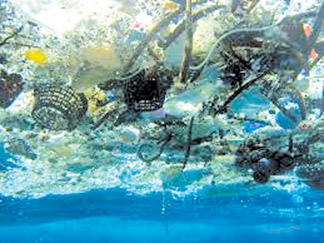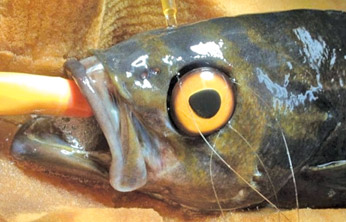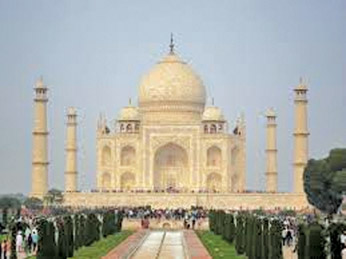|

World's oceans filled with over 5 trillion pieces of plastic
 Scientists estimate that there are 5.25 trillion pieces of plastic
floating in the world's oceans right now, an amount that totals up to
almost 270,000 tons!To make things worse, those numbers are an
underestimation.An article recently published in the science journal
Plos One describes how plastic has spread to all corners of the Earth.
There is as much plastic in the northern hemisphere as the southern,
which surprised researchers because most of it originates in the
north.The article cites Plastics Europe estimated that 288 million tons
of plastic were produced around the world in 2012. Researchers' estimate
of the amount of plastic in the ocean around the world is only 0.1 per
cent of that number.We may not be eating this plastic, but animals that
are often on our dinner plates do."We saw ... fish that ingested fishing
lines," said Julia Reisser, a researcher with the University of Western
Australia."But there are also chemical impacts. When plastic gets into
the water it acts like a magnet for oily pollutants. Bigger fish eat the
little fish and then they end up on our plates. Scientists estimate that there are 5.25 trillion pieces of plastic
floating in the world's oceans right now, an amount that totals up to
almost 270,000 tons!To make things worse, those numbers are an
underestimation.An article recently published in the science journal
Plos One describes how plastic has spread to all corners of the Earth.
There is as much plastic in the northern hemisphere as the southern,
which surprised researchers because most of it originates in the
north.The article cites Plastics Europe estimated that 288 million tons
of plastic were produced around the world in 2012. Researchers' estimate
of the amount of plastic in the ocean around the world is only 0.1 per
cent of that number.We may not be eating this plastic, but animals that
are often on our dinner plates do."We saw ... fish that ingested fishing
lines," said Julia Reisser, a researcher with the University of Western
Australia."But there are also chemical impacts. When plastic gets into
the water it acts like a magnet for oily pollutants. Bigger fish eat the
little fish and then they end up on our plates.
It's hard to tell how much pollution is being ingested but certainly
plastics are providing some of it."
Not included in the estimated 5.25 trillion pieces of plastics at sea
are pieces that have long since sunk to the bottom of the ocean, are
scattered on shorelines, and have been eaten by fish and animals
already. Do you make any effort to reduce your waste?
-Internet
Half-blind rockfish gets prosthetic eye
 Humans aren't the only species that can get bullied - animals also
pick on their peers who are different. In light of that, a veterinarian
recently gave a rockfish at the Vancouver Aquarium a prosthetic eye to
keep it from being picked on by other fish in the tank!The older
rockfish developed cataracts and had to have its left eye removed. Head
veterinarian Dr. Martin Haulena knew that the other fish in its tank
would pick on it for looking sick and weak, so he gave the fish a new
eye. Dr. Haluena fixed the prosthetic eye to a bone above its eye socket
with nylon stitches and attached it with titanium clips- all while the
fish was under anaesthetic."Some people don't realise how much effort we
give fish," he said.The rockfish can't see out of the eye, but it's
almost impossible to tell that it isn't real! Humans aren't the only species that can get bullied - animals also
pick on their peers who are different. In light of that, a veterinarian
recently gave a rockfish at the Vancouver Aquarium a prosthetic eye to
keep it from being picked on by other fish in the tank!The older
rockfish developed cataracts and had to have its left eye removed. Head
veterinarian Dr. Martin Haulena knew that the other fish in its tank
would pick on it for looking sick and weak, so he gave the fish a new
eye. Dr. Haluena fixed the prosthetic eye to a bone above its eye socket
with nylon stitches and attached it with titanium clips- all while the
fish was under anaesthetic."Some people don't realise how much effort we
give fish," he said.The rockfish can't see out of the eye, but it's
almost impossible to tell that it isn't real!
-Internet
The Taj Mahal is turning brown from pollution
 The Taj Mahal is an iconic, beautiful structure in India that draws
millions of tourists and Muslim pilgrims every year. It is well known
for its pristine white marble, but lately that marble hasn't been quite
white.The mausoleum is slowly turning a gloomy shade of brown. Some
guessed that this was because sulphurous gas or water droplets from fog,
but Georgia Institute of Technology researcher Mike Bergin figured out
what the real cause of pollutants from cars, cooking smoke, dust, and
garbage fires. For a year, Bergin and other researchers from Georgia
Tech and India measured particle concentrations in the air around the
palace and its walls to figure out what was causing the discolouration
and why it couldn't be washed off by rainwater. They found that the
pollutant particles stick to the marble, and ultraviolet light from the
sun colours them a dirty brown shade. They also found that these
particles are not water-soluble, which means they can't be washed off
with water."There is some concern regarding the long-term impact of the
cleanings on the Taj domes. The Taj Mahal is an iconic, beautiful structure in India that draws
millions of tourists and Muslim pilgrims every year. It is well known
for its pristine white marble, but lately that marble hasn't been quite
white.The mausoleum is slowly turning a gloomy shade of brown. Some
guessed that this was because sulphurous gas or water droplets from fog,
but Georgia Institute of Technology researcher Mike Bergin figured out
what the real cause of pollutants from cars, cooking smoke, dust, and
garbage fires. For a year, Bergin and other researchers from Georgia
Tech and India measured particle concentrations in the air around the
palace and its walls to figure out what was causing the discolouration
and why it couldn't be washed off by rainwater. They found that the
pollutant particles stick to the marble, and ultraviolet light from the
sun colours them a dirty brown shade. They also found that these
particles are not water-soluble, which means they can't be washed off
with water."There is some concern regarding the long-term impact of the
cleanings on the Taj domes.
The only real way to stop the Taj from discolouration is to find the
sources of the particles and figure out a way to substantially decrease
emissions," said Bergin. To clean the building, workers cover its
outside walls with a layer of clay every few years. They leave it on for
a while and then peel it off, which peels off the brown particles and
restores the Taj Mahal to its glorious white."The Taj Mahal can be
thought of as the lungs of India, since the same particles that deposit
on the Taj are being breathed in by people living in the region. The
particles are bad for human health. Cleaning up the Taj will certainly
make people more healthy in the region,"
Bergin said.Bergin and other researchers have set up air sampling
machines around the Taj to monitor air pollution levels, but it is up to
the people of India, a country with one of the highest levels of air
pollution, to do their part to make the air cleaner.
-Internet
|

